 March 17, 2016 John E. Ross, KD8IDJ, Editor
| ||||||||||
ARRL Urges FCC Not to Impose Overbroad Notification Requirement on 2200 and 630 Meter Operation In an ex parte statement filed March 10 with the FCC, the ARRL has asked the Commission not to adopt "an overbroad" requirement for notification of utilities in advance of intended Amateur Radio operation on the pending 2200 (135.7-137.8 kHz) and 630 meter (472-479 kHz) bands. The statement, filed in ET Dockets 12-338 and 15-99, supplemented the League's earlier comments in the proceeding. The FCC is expected to provide Amateur Radio with access to both bands and to spell out service rules and operational requirements sometime within the first quarter of 2016. Regulatory provisions under "ARRL does not object to such a notification requirement, provided that it is appropriately circumscribed, not overbroad in its applicability, and not overly burdensome for radio amateurs to comply with," the League's statement asserted. The ARRL noted that comments filed by the Utilities Telecom Council (UTC) called for a system of "quasi-coordination" by radio amateurs before commencing operation on 2200 meters. In its remarks to the FCC, the ARRL pointed out, however, that the UTC has not volunteered any information with respect to how a notification process might work, nor offered any PLC database information to the ARRL or to the amateur community so prospective users of the band could determine if their operation might be problematic. The ARRL expressed concern that "this vague reference" to a notification procedure by UTC might lead the FCC to adopt an overbroad notification requirement for radio amateurs intending to operate in either the 2200 or 630 meter band. The League further pointed out that PLC systems operating between 9 and 490 kHz are not subject to protection from licensed services.
The League reiterated its willingness to accept distance-separation criteria between amateur stations operating on either band and PLC-carrying transmission lines using frequencies in either band, and a notification process in the few instances in which an amateur station intends to operate on either band within close proximity to a transmission line with a PLC using the same frequencies. The League said interference potential to PLC systems from Amateur Radio operation on 2200 or 630 meters is very low, with the possible exception of amateur operation within 1 kilometer of an existing transmission line carrying co-channel PLC signals. "It would be an unreasonable regulatory burden to require more than this, and there is no record justification for a requirement that all radio amateurs who wish to operate in these bands to have to participate in a notification process," the ARRL said in its ex parte statement. Any sort of blanket notification requirement prior to transmitting on 2200 or 630 meters "would be clear regulatory overkill," the ARRL concluded. Read more. ARES, SKYWARN Volunteers Respond to Heavy Rain, Flooding in Louisiana Amateur Radio Emergency Service (ARES) and SKYWARN volunteers in Louisiana assisted the National Weather Service (NWS), as record-setting rainfall led to severe and widespread flooding. The Federal Emergency Management Agency (FEMA) has approved a disaster declaration for the state. Region 7 District Emergency Coordinator John Mark Robertson, K5JMR, in the Shreveport-Bossier City area, said Amateur Radio involvement began on March 8, when the NWS-Shreveport Office requested a SKYWARN activation during a tornado watch.
For the next 17 hours, Robertson reported, a group of volunteers handled weather-spotting duties over linked repeaters, filing some 70 reports. Their coverage included parts of Texas and Arkansas. The severe weather included hail as well as major flooding that closed Interstate 20 in three Louisiana parishes and inundated entire neighborhoods. On March 10, the ARES team in Tangipahoa Parish in southeastern Louisiana was active for nearly 2 days in response to heavy rain and flooding. "Local hams operating [fixed, portable, or mobile] provided updates on local conditions and were able to offer road reports to travelers on the state highways and Interstate 12, which crosses all of the major rivers in our area," ARES Region 9 DEC Bob Priez, WB5FBS, told ARRL. He said numerous rivers, streams, and waterways were well above flood stage by the afternoon of March 11.
"We were able to receive and send weather bulletins and flood conditions to and from the NWS in Slidell, Louisiana, using our 147.000 repeater and the Slidell 147.270 repeater. The 147.000 repeater also provided communication with the EOC at Southeastern Louisiana University and Tangipahoa Parish EOC in Amite, Louisiana," he said. Fixed stations used packet radio on VHF as well as conventional e-mail to relay NWS weather bulletins and to forward local reports to NWS. Priez said the March activation was the third for his ARES crew since two events in February, when the area was hit with heavy rain and wind. He said that event gave the group the opportunity to test recently revised plans to interface directly with the NWS Office in Slidell via repeaters in Tangipahoa and St Tammany parishes, and via packet. "This plan proved really effective in the February 23 event, which, in addition to rains and winds, also spawned numerous tornadoes across the southeast region," Priez said. "Our widespread ham radio observers On March 13, Robertson said three SKYWARN volunteers activated in response to severe weather, posting 25 messages dealing with tornado watches and warnings, reports of hail, and continued major flooding. As the National Weather Service reported, the highest reported rainfall total was "a whopping 26.96 inches!" southeast of Monroe. The NWS has posted rainfall totals for the March 8-12 period. The flooding has led to road closings over a wide area, and law enforcement personnel assisted by the Louisiana National Guard used boats to reach and rescue stranded residents and their pets. Southern Florida ARES Volunteers Support Biennial Nuclear Power Plant Drill ARES teams from five Florida counties took part in a February 24 exercise at the St Lucie Nuclear Power Plant on Hutchinson Island in Jensen Beach. The plant is required to hold an exercise every 2 years to ARES teams participated from St Lucie, Palm Beach, Martin, Indian River, and Brevard counties. Operators successfully employed the linked UHF repeater-based Statewide Amateur Radio Network (SARnet) for most communication, as well as an HF net on 7.245 MHz.
The dual nets provided for redundancy and reliability for the ARES mission to support the EOCs. SARnet serves the State of Florida; it's interconnected by a Florida Department of Transportation network. All ARES communication tests and requirements were successfully passed and met, and evaluators praised the use of dual nets for enhanced reliability. Martin County ARES also had a display of go-kits. A FEMA representative visited with ARES EC Steve Marshall, WW4RX, who discussed the kits and answered questions about SARnet and its coverage. -- Thanks to the ARRL ARES E-Letter National Parks on the Air Update ARRL has created a certificate for National Park Service employees who go the extra mile in helping to promote or assist National Parks on the Air (NPOTA) There are 52 activations scheduled for the week of March 17-23, including Mammoth Cave National Park (NP39) in Kentucky, and the newest addition to the National Parks System, Castle Mountains National Monument (MN82) in California. Details about these and other upcoming activations can be found on the NPOTA Activations calendar. Keep up with the latest NPOTA news on Facebook. Follow NPOTA on Twitter (@ARRL_NPOTA). ARRL Now on Instagram! ARRL now has a presence on Instagram, a social networking app made for sharing photos and videos. Similar to Facebook or Twitter, everyone who creates an account has a profile and a news feed. Photos or videos you post on Instagram will be displayed on your profile. Other users who follow you will see your posts in their own feed. Likewise, you'll see posts from other users who you choose to follow. Instagram is available for free on iOS, Android, and Windows phone devices. It can also be accessed on the web from a computer, but users can only upload, share photos or videos, and create an account from their devices.
Instagram is all about visual sharing. Every user profile has a "Followers" and "Following" count, representing how many people they follow and how many users are following them. Every user profile has a button you can tap to follow them. If a user has their profile set to private, they will need to approve your request first. Interacting within posts is fun and easy. You can double tap any post to "like" it or add a comment at the bottom. The @ sign represents a link to your user profile. For example, if you choose your username to be JaneDoe, other users can tag you in their posts by commenting @JaneDoe, which, by clicking it, will bring them directly to your profile. If you want to find more friends or interesting accounts to follow, use the search tab (marked by the magnifying glass icon) to browse through posts recommended to you. You can also use the search bar at the top to look for specific users or #hashtag. ARRL uses Instagram to promote current events, happenings at Headquarters, and news. ARRL is on Instagram as @arrlhq. Follow us, and you'll have instant access to all photos and videos that we post. It's an interesting and entertaining collection that will only grow over time! -- Thanks to Erin Day RFinder -- The Worldwide Repeater Directory -- Now Includes Coverage Maps RFinder -- The Worldwide Repeater Directory -- now will include coverage maps for all repeaters on Earth. In February, the ARRL established an agreement with RFinder, the creator of a web- and app-based directory of Amateur Radio repeaters worldwide, to serve as its preferred online resource of repeater frequencies. RFinder has partnered with CloudRF.com to provide the maps. "Our systems are busy rendering and indexing coverage maps, based on ground-path loss using the Longley-Rice irregular terrain model," explained RFinder Creater Bob Greenberg, W2CYK. "We have worked with Alex Farrant, M6ZUJ, creator of CloudRF.com, to render coverage maps for nearly the entire collection of repeaters in RFinder's database."
RFinder has downloaded and will serve as a host for KMZ (Keyhole Markup Language Zipped) overlays for Google Earth. The resulting KMZ place marker files will be viewable in Google Earth on Windows and Mac platforms (via web.rfinder.net and routes.rfinder.net) and on Android and iOS versions of RFinder. The Windows and Mac versions allow the viewing of multiple coverage maps at the same time. As part of this project, RFinder will provide free access to repeater coordinators worldwide. As coordinators update repeaters with height above average terrain (HAAT), power and gain, and latitude and longitude, maps will be automatically re-rendered within a few minutes and made available to subscribers. The sign-up procedure for the repeater coordinator program will be announced later this month. The new capability is expected to ease the work of repeater coordinators, as they will easily be able to see repeater coverage maps side by side for both coordinated and uncoordinated machines -- information critical as simplex nodes for Internet linking, cross-band repeaters, and homebrew repeaters crop up worldwide. Users of the trial version of RFinder on Android will have access to coverage maps for a limited time, after which only subscribers will have access. An annual $9.99 RFinder subscription provides access to repeater data worldwide. RFinder will be an ARRL EXPO exhibitor at Dayton Hamvention®, May 20-22. Read more. ARISS Marks its 1000th Contact! The Amateur Radio on the International Space Station (ARISS) program has celebrated a milestone -- its 1000th school radio contact. The first ARISS contact with students on Earth took place a little more than 15 years ago. On March 10, ISS crew member Tim Kopra, KE5UDN, did the honors for number 1000 -- a contact with students from schools in North Dakota and Minnesota gathered at the University of North Dakota in Grand Forks, organized by the North Dakota Space Grant Consortium (NDSGC). The ARISS contact was the first to be hosted in North Dakota, and some 500 students and visitors were on hand for the big event. ARISS International Chair Frank Bauer, KA3HDO, congratulated the ARISS team on what he called "this phenomenal accomplishment."
"With the outstanding support of NASA and the international space agencies participating in ISS, the ISS on-orbit crew members encompassing all 48 expeditions and the hundreds of ARISS volunteers worldwide, the ARISS team has reached a tremendous milestone: 1000 ARISS contacts between schools on the ground and the ISS crews on orbit," he said. "Since our first contact in December 2000 to today's contact in North Dakota, hundreds of thousands of students have participated in the hands-on STEM learning that ARISS affords, and many millions from the general public have witnessed human spaceflight in action through an ARISS contact." During the 10-minute ARISS contact Kopra answered 20 questions posed by young people ranging from kindergarten to graduate school.
Astronaut Tim Peake, KG5BVI -- one of Kopra's crew mates on the ISS -- said in another NASA video marking the milestone that talking to schools via Amateur Radio has been "one of the most rewarding activities" of his time in space. Ahead of the actual contact, a consortium team led youngsters at participating schools in hands-on activities and learning about aerospace, priming them for the interview with Kopra. The students, many from smaller rural communities, built and launched rockets, crafted and tested parachutes similar to those on NASA's Orion capsule, and designed and tested neutral buoyant objects. Read more. Over the Horizon Radars Becoming Routine Visitors on Amateur HF Bands The International Amateur Radio Union Region 1 (Europe/Africa) Monitoring System (IARUMS) has reported a spate of over the horizon (OTH) radar signals on various Amateur Radio HF bands -- exclusive and shared. Many of these signals are being heard outside of the Region 1 confines.
A 50 kHz wide Russian OTH radar has been heard in the evening on 80 meters, often in the CW part of the band. An "often long-lasting" Russian OTH signal about 13 kHz wide is being heard on the 7000-7100 kHz segment of 40 meters, while some digital traffic (FSK or PSK), and a "Codar-like radar from the Far East" are being heard in the 7000-7200 kHz segment as well as non-amateur CW transmissions. The same OTH radar being heard on 40 meters also is appearing on 20 meters, along with digital traffic in FSK or PSK and on CW and broadband OTH radar signals from China. Some monitoring reports are intriguing, such as this one on 14.280 MHz from IARU Region 1 Monitoring System Coordinator Wolf Hadel, DK2OM: "Female voice with encrypted msgs -- figures -- 'SZRU' = Foreign Intelligence Service of Ukraine in Rivne -- every Wednesday at 1005 UTC."
Voice traffic from fishing operations has been heard on all or most HF bands, as have a variety of broadcasters, including the third harmonic of Radio Tajik (4765 kHz) on 14.295 MHz, Radio Taiwan and Myanmar Radio, both on 7.200 MHz, and Radio Hargeysa in Somalia on 7.120 MHz. The February 2016 IARU Region 1 Monitoring System newsletter offers more details. There is an online archive of past issues. -- Thanks to the IARU Region 1 Monitoring System National Hurricane Conference Amateur Radio Sessions to be Live Streamed Sessions focusing on the role of Amateur Radio in major weather events will be a part the 2016 National Hurricane Conference, set for later this month in Orlando, Florida. The goal of the annual conference is to improve hurricane preparedness. Attendance is free to all Amateur Radio sessions, which will take place Tuesday, March 22, from 1:30 until 5 PM ET (1830-2200 UTC). Amateur Radio presentations will be live streamed via YouTube and recorded.
The 2 PM session will feature presentations from Hurricane Watch Net (HWN) Manager Bobby Graves, KB5HAV, discussing the HWN, personal weather stations, and back-up power and antennas; VoIP Hurricane Net director of operations and ARRL ARES Eastern Massachusetts Assistant SEC Rob Macedo, KD1CY, on the VoIP Hurricane Net and best practices in SKYWARN tropical systems, and ARRL Assistant Emergency Preparedness Manager Ken Bailey, K1FUG, who will offer an ARRL beginner's course in Amateur Radio hurricane preparedness. A question-and-answer session will follow the presentations. The National Hurricane Conference takes place March 21-24 at the Hilton Orlando. Some 2000 attendees are expected. Young Connecticut Ham Off to an Award-Winning Start Fifteen-year-old Matt Shea, KC1DLY, had no Amateur Radio ticket 1 year ago. Today, he's an Amateur Extra class licensee and already
holds two of the League's flagship operating awards -- DXCC and Worked All States (WAS). His 100 W station is quite modest, with a 35-foot end-fed wire in the attic for his antenna (and he even operates on 160 meters!). He confirmed all of the contacts necessary for the two awards using Logbook of The World (LoTW). ARRL CEO-Elect Tom Gallagher, NY2RF, on March 7 congratulated Shea and presented him with his awards. "I play radio daily and absolutely love it," Shea, a high school sophomore in Southington, Connecticut, said on his QRZ.com profile. In addition to ham radio, he's on the Southington High School Robotics Team, and he's been busy recruiting new radio amateurs among his friends at school. "I am hoping to get a few more new hams on the air to keep the great hobby going!" he said. -- Thanks to Sean Kutzko, KX9X Former DX QSL Manager Mary Ann Crider, WA3HUP, SK Well-known QSL manager for DX stations and a former manager of the Third Call Area QSL Bureau Mary Ann Crider, WA3HUP, of Duncannon, Pennsylvania, died on March 12 after a period of failing health. An ARRL member, she was 91. DX chasers during the 1970s, 1980s, and 1990s likely received QSL cards from DX stations for which she handled QSLing duties.
In 2005, the ARRL Executive Committee voted unanimously to name Crider the recipient of ARRL President's Award for her contributions to the cause of international goodwill through her long service as a QSL manager and as manager of the ARRL Third Call Area Incoming QSL Bureau. When she stepped down, the National Capitol DX Association (NCDXA) took over the bureau, with noted DXer Fred Laun, K3ZO, at the helm. At the time, Laun cited Crider's "encyclopedic knowledge of DXCC entities and call sign prefixes...built by her work in the trenches, as illustrated by her DXCC confirmed total of 360 entities." Before she became the bureau's manager, Crider served as a sorter for 11 years. Among the DX operators she served as QSL manager was King Hussein of Jordan, JY1, and she made several trips to Jordan to visit him. Crider was licensed as a Novice in 1967. Her late husband was W3GE (ex-W3HTO). A service is set for Saturday, March 19. -- Thanks to Glenn Kurzenknabe, K3SWZ, Kay Craigie, N3KN, and to The Daily DX In Brief...
The K7RA Solar Update Tad Cook, K7RA, Seattle, reports: Solar indicators were lower this week, while geomagnetic indicators were higher. Compared to the previous 7 days, average daily sunspot numbers in our reporting week (March 10-16) dropped by 12.7 points to 51.7, and average daily solar flux was down by 3.2 points to 93.6. The average planetary A index was up by 2.8 points to 15.7, and the average mid-latitude A index increased from 8.6 to 12.
The predicted planetary A index is 14, 8, and 5 on March 17-19; 4, 6, and 8 on March 20-22; 5 on March 23-31, and 8, 30, 25, and 8 on April 1-4. The planetary A index rises to 25 on April 11, and to 30 on April 29. Sunspot numbers for March 10 through 16 were 61, 48, 56, 43, 57, 44, and 53, with a mean of 51.7. The 10.7 centimeter flux was 95, 94.2, 95, 92.6, 93.4, 94.1, and 91, with a mean of 93.6. Estimated planetary A indices were 10, 23, 13, 4, 14, 24, and 22, with a mean of 15.7. Estimated mid-latitude A indices were 7, 21, 11, 4, 11, 17, and 13, with a mean of 12. Send me your reports and observations.
. . . . . . . Just Ahead in Radiosport
See the ARRL Contest Calendar for more information. For in-depth reporting on Amateur Radio contesting, subscribe to The ARRL Contest Update via your ARRL member profile e-mail preferences. Upcoming ARRL Section, State, and Division Conventions and Events
Find conventions and hamfests in your area.
. . .
Subscribe to...
Free of charge to ARRL members...
Find ARRL on Facebook! Follow us on Twitter and Instagram! | ||||||||||
 consideration have included a possible notification requirement by some radio amateurs to utilities that operate PLC systems in that region of the spectrum, prior to operating on either new band. Utilities use unlicensed, mostly LF PLC systems to control parts of the electrical power grid.
consideration have included a possible notification requirement by some radio amateurs to utilities that operate PLC systems in that region of the spectrum, prior to operating on either new band. Utilities use unlicensed, mostly LF PLC systems to control parts of the electrical power grid.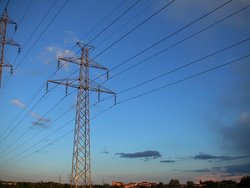
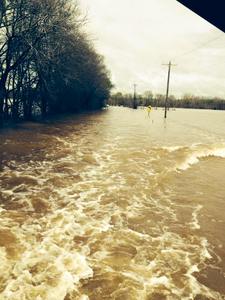
.jpg)
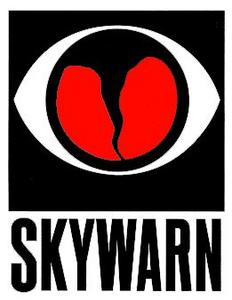 were able to send real-time reports of tornado activity in Livingston, Montpelier, and Convent, and from Washington and St John parishes in Louisiana, and also from southwestern Mississippi." The group also kept in contact with the Southeastern Louisiana University EOC and the Tangipahoa Parish EOC via the local VHF repeater.
were able to send real-time reports of tornado activity in Livingston, Montpelier, and Convent, and from Washington and St John parishes in Louisiana, and also from southwestern Mississippi." The group also kept in contact with the Southeastern Louisiana University EOC and the Tangipahoa Parish EOC via the local VHF repeater..jpg) test and evaluate the responses of plant personnel, law enforcement, emergency managers, and communication personnel in the event of an emergency, such as a radiation release. The exercises are evaluated by personnel from the Federal Emergency Management Agency (FEMA) and the Nuclear Regulatory Commission (NRC). The 2016 scenario involved overloaded and unusable public telecommunication systems. In a real emergency, ARES volunteers would provide radio communication among the county emergency operations centers and other critical entities and locations.
test and evaluate the responses of plant personnel, law enforcement, emergency managers, and communication personnel in the event of an emergency, such as a radiation release. The exercises are evaluated by personnel from the Federal Emergency Management Agency (FEMA) and the Nuclear Regulatory Commission (NRC). The 2016 scenario involved overloaded and unusable public telecommunication systems. In a real emergency, ARES volunteers would provide radio communication among the county emergency operations centers and other critical entities and locations.
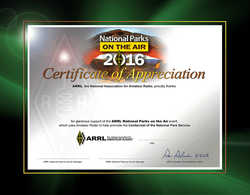 activity in their parks. The NPOTA Certificate of Appreciation is available to any NPS employee or volunteer who is recommended by the NPOTA Activator community for exceptional assistance in promoting NPOTA. Show your appreciation for the NPS staffer who helped to make your activation a success; nominate them for the NPOTA Certificate of Appreciation.
activity in their parks. The NPOTA Certificate of Appreciation is available to any NPS employee or volunteer who is recommended by the NPOTA Activator community for exceptional assistance in promoting NPOTA. Show your appreciation for the NPS staffer who helped to make your activation a success; nominate them for the NPOTA Certificate of Appreciation. 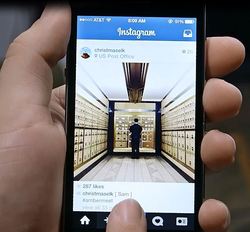 Before you can start using the app, Instagram will ask you to create a free account. You can sign up via your existing Facebook account or through the app itself. After you sign up, you may be asked if you want to follow some friends who are on Instagram in your Facebook network.
Before you can start using the app, Instagram will ask you to create a free account. You can sign up via your existing Facebook account or through the app itself. After you sign up, you may be asked if you want to follow some friends who are on Instagram in your Facebook network.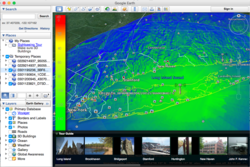
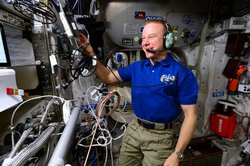
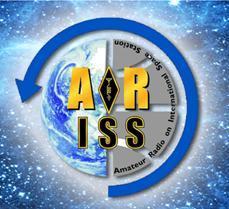 Veteran astronaut Mike Fincke, KE5AIT, marveled at the number of contacts completed to date. "A thousand contacts. Who would have ever thought?" he said in a NASA video marking the milestone. "That means a thousand times we've had a chance to reach down to Planet Earth to make contact and to inspire the next generation of explorers. So, I congratulate the ARISS program."
Veteran astronaut Mike Fincke, KE5AIT, marveled at the number of contacts completed to date. "A thousand contacts. Who would have ever thought?" he said in a NASA video marking the milestone. "That means a thousand times we've had a chance to reach down to Planet Earth to make contact and to inspire the next generation of explorers. So, I congratulate the ARISS program."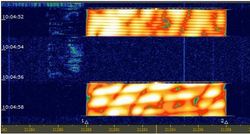
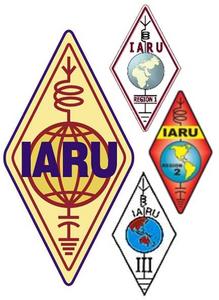 Broadband OTH radars from China, Australia, Cyprus, and Turkey have been monitored in 15 meters. On 10 meters, radars from Iran with FM CW and different sweep rates have been monitored, as well as fishery buoys on CW, and taxi operations on voice from Russia.
Broadband OTH radars from China, Australia, Cyprus, and Turkey have been monitored in 15 meters. On 10 meters, radars from Iran with FM CW and different sweep rates have been monitored, as well as fishery buoys on CW, and taxi operations on voice from Russia.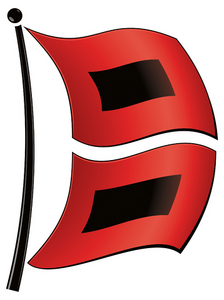 At the 1:30 PM session, National Hurricane Center Director Rick Knabb will discuss the importance of Amateur Radio surface reporting. Other presenters will include Bob Robichaud, VE1MBR, of the Canadian Hurricane Centre, who will speak on hurricane meteorology and give a brief overview of his center's operation, and WX4NHC Assistant Amateur Radio Station Coordinator Julio Ripoll, WD4R, who will talk about activities at WX4NHC, the National Hurricane Center's Amateur Radio station.
At the 1:30 PM session, National Hurricane Center Director Rick Knabb will discuss the importance of Amateur Radio surface reporting. Other presenters will include Bob Robichaud, VE1MBR, of the Canadian Hurricane Centre, who will speak on hurricane meteorology and give a brief overview of his center's operation, and WX4NHC Assistant Amateur Radio Station Coordinator Julio Ripoll, WD4R, who will talk about activities at WX4NHC, the National Hurricane Center's Amateur Radio station.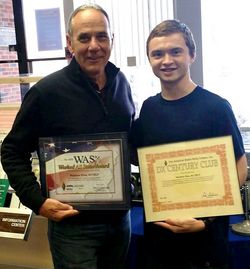
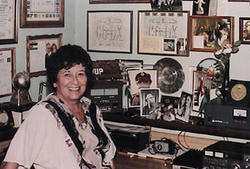
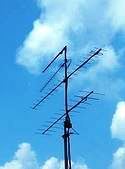 ARRL 2016 August UHF Contest Cancelled: The ARRL August UHF Contest for 2016 has been cancelled, while the ARRL VHF Contest Revitalization Committee mulls its future. The Contest Revitalization Committee fielded dozens of comments from members concerning possible changes to this annual UHF operating event, traditionally held on the first weekend of August each year. Many commenters expressed dissatisfaction with the timing of the contest, occurring as it does at the hottest time of the year, and that it was too close on the calendar to other VHF/UHF events. In response to this member input, the Contest Revitalization Committee recommended to the Programs and Services Committee (PSC) that the 2016 August UHF Contest be cancelled, and the PSC agreed. The ARRL VHF Contest Revitalization Committee continues to study the possibility of redesigning the August UHF Contest or replacing it with a similar event at another point in the calendar -- possibly in the spring -- for 2017. The Committee will solicit member comments in the near future, as it weighs several alternatives.
ARRL 2016 August UHF Contest Cancelled: The ARRL August UHF Contest for 2016 has been cancelled, while the ARRL VHF Contest Revitalization Committee mulls its future. The Contest Revitalization Committee fielded dozens of comments from members concerning possible changes to this annual UHF operating event, traditionally held on the first weekend of August each year. Many commenters expressed dissatisfaction with the timing of the contest, occurring as it does at the hottest time of the year, and that it was too close on the calendar to other VHF/UHF events. In response to this member input, the Contest Revitalization Committee recommended to the Programs and Services Committee (PSC) that the 2016 August UHF Contest be cancelled, and the PSC agreed. The ARRL VHF Contest Revitalization Committee continues to study the possibility of redesigning the August UHF Contest or replacing it with a similar event at another point in the calendar -- possibly in the spring -- for 2017. The Committee will solicit member comments in the near future, as it weighs several alternatives. Boston Marathon Communications Committee Seeks Additional Amateur Radio Volunteers:
Boston Marathon Communications Committee Seeks Additional Amateur Radio Volunteers: .jpeg) Russian "Inventors of Telecommunications" Stations on the Air: Special event stations in Russia will be on the air from March 16 until June 16 as part of the international scientific-educational radio marathon called "
Russian "Inventors of Telecommunications" Stations on the Air: Special event stations in Russia will be on the air from March 16 until June 16 as part of the international scientific-educational radio marathon called "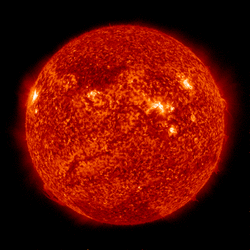 The latest forecast has predicted solar flux at 95 on March 17-19; 90 on March 20-21; 85 on March 22-23; 95 on March 24-28; 100 on March 29-31; 95 on April 1-9; 93 on April 10; 90 on April 11-15; 95 on April 16-17, and 90 on April 18-19. Flux values then rise to 100 on April 25-27.
The latest forecast has predicted solar flux at 95 on March 17-19; 90 on March 20-21; 85 on March 22-23; 95 on March 24-28; 100 on March 29-31; 95 on April 1-9; 93 on April 10; 90 on April 11-15; 95 on April 16-17, and 90 on April 18-19. Flux values then rise to 100 on April 25-27.








